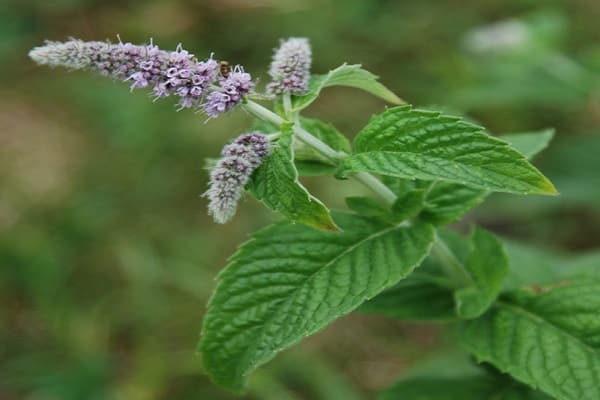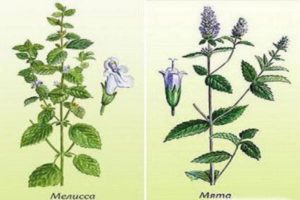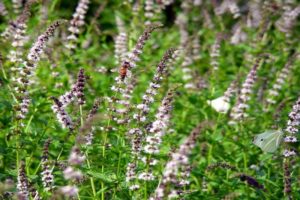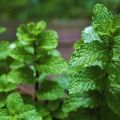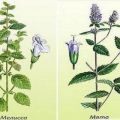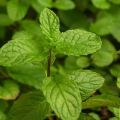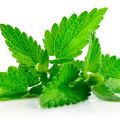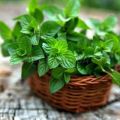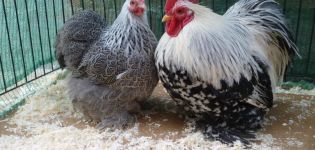Description of varieties and types of mint with names that exist
There are cultivated species of mint and those growing in the wild. Despite the diversity of this culture, a general description can be made. Herbaceous plants 30-1000 cm high have an elastic stem, crowned with an inflorescence of small flowers of purple and pink shades. The plant reaches its maximum concentration of essential oils at the end of the flowering phase, but the collection of fragrant leaves begins in June. Gardeners have long appreciated mint for its healing properties, the possibility of using it in cooking and perfumery.
About the plant
Mint is difficult to confuse with other plants due to its unique scent. Leaves of bright green color are similar in shape to nettles. This culture is familiar to everyone from childhood. Despite its wide distribution in Russia, mint is native to Central Asia and the Mediterranean countries.
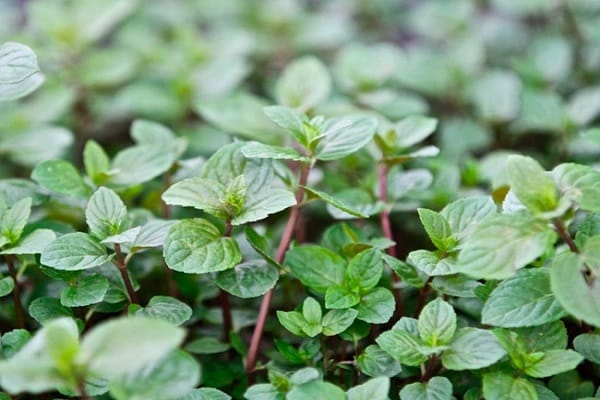
Among hundreds of species, the most popular are:
- pepper;
- feline;
- lemon;
- swamp;
- garden;
- horse;
- long-leaved;
- garden.
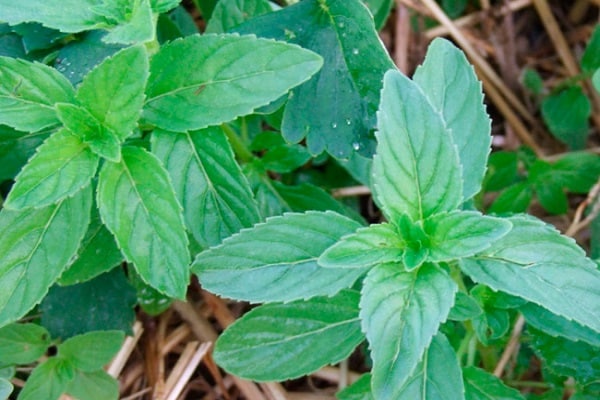
Main characteristics
Mint of any type and variety is easy to grow in an apartment and in a garden. Due to its unpretentiousness, the plant is often found among weeds. The culture itself and the extract are widely used in cooking and pharmaceuticals. It serves as the basis for flavorings, among which menthol is a separate link. A huge list of medicinal characteristics allows the use of mint in traditional medicine. However, a few contraindications should be taken into account so as not to harm the body.

Beneficial features
The healing properties of mint help in the fight against many diseases, which has found application in the creation of medicines. The herb has a bactericidal, antiseptic, antispasmodic and vasodilating effect. Due to the content of a mass of useful substances with mint, ailments related to various organ systems are cured:
- Digestive. The herb helps with nausea, belching, heartburn, flatulence, cramps. Broths stimulate digestive processes and intestinal peristalsis. It is advisable to use mint for metabolic disorders, problems with the gallbladder, chronic cholecystitis.
- Blood circulatory. Homemade medicines improve blood circulation, relieve attacks of angina pectoris and hypertension.
- Nervous. Peppermint tea is indicated for insomnia, depression, stress, neuralgia. The addition of fragrant leaves to drinks reduces the intensity of migraines.
- Respiratory.The culture has an auxiliary effect in the case of respiratory diseases such as asthmatic bronchitis, tonsillitis, colds, making the condition easier.
- Female genital. Relieves the symptoms of menopause, heals inflammation of the genitals. Weak mint tea is indicated for pregnant women in order to raise the mood and relieve signs of toxicosis.

Areas of use:
- Perfumery. Mint ether is often included in perfume.
- Pharmaceuticals. The herb extract and ester are a component of many potions, cough syrups, lozenges, and throat lozenges.
- Cooking. Main focus: drinks and desserts.
- Cosmetology. Due to its antiseptic properties, it is used in the manufacture of masks for acne and acne.
Before using mint for medicinal purposes, it is recommended to consult a specialist.
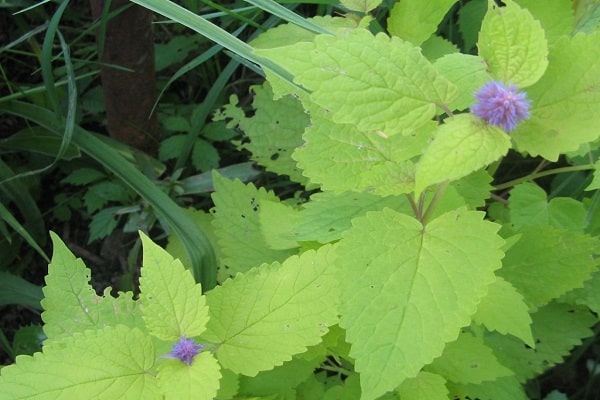
Where grows
The culture is grown in many countries of the world, not only for personal but also for commercial purposes. In the southern regions, preference is given to perennial varieties, in the northern and in places with a temperate climate - to annuals.
Mint was brought to Russia from England at the end of the 19th century. The largest distribution area is observed in the middle zone of the state.
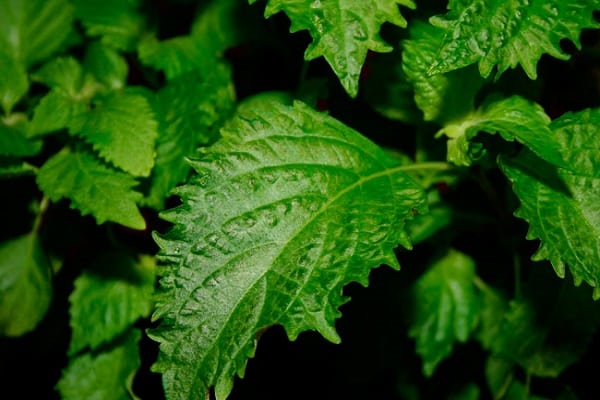
The light-loving plant is responsive to the sun's rays. Loves moist, fertile soil.
High productivity is achieved in the Crimea, Stavropol Territory, and the Caucasus. Some species grow in the Far East and Siberia. In the wild, it is found near swamps, along the banks of rivers and lakes, in wet fields and meadows.
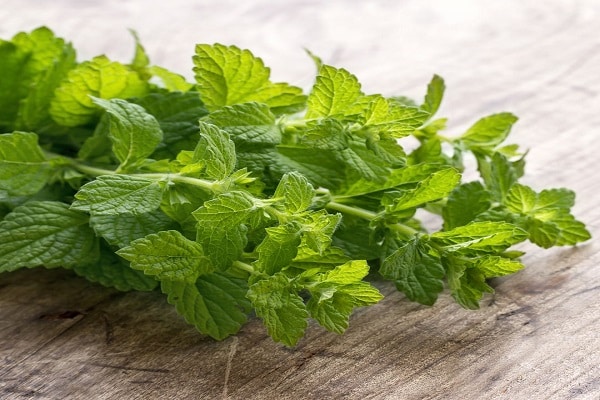
Mint varieties
Experts are actively working on the creation of new varieties of mint. There are many varieties that do not lose their relevance, for example:
- Prilukskaya-6. The meter plant contains 50% menthol. Due to its low frost resistance, it is suitable for areas with a warm climate.
- Kuban-6. Another thermophilic variety with a height of 1000 cm, with a large presence of menthol.
- Krasnodar-2. Mint with a lower menthol content reaches a meter height.
- Medicinal-4. A variety with pronounced healing properties. It grows over one meter in height. Menthol reaches 60%.
- Riddle. A variety of Ukrainian selection. It has a high menthol content: 64%.
- Medic. It overtakes other species in menthol content - 67% and frost resistance.
Mint varieties of European breeders are also cultivated on Russian territory.
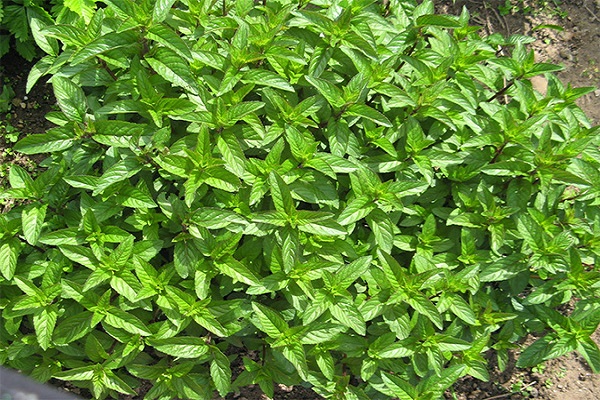
Cat mint
The catnip is so named because of the presence of nepetalactone, which attracts felines. It grows up to 40-1000 cm. Straight, strong stems are covered with triangular-ovate pubescent leaves with jagged edges. White flowers adorned with splashes of purple or purple, bloom in early or mid-summer. The seed capsule ripens in August.
The plant has a bright, unique lemon scent. Often found in the wild. An excellent honey plant, often grown next to apiaries. It enjoys success in the perfumery, confectionery, soap making, medical fields. People take it in case of anemia, hysterical conditions, migraines, intestinal problems.
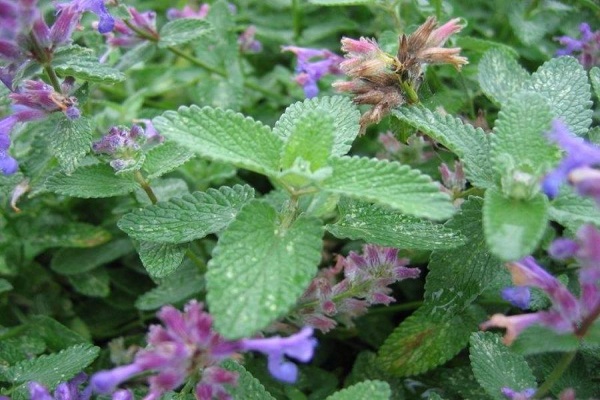
Lemon mint
Known by the names: lemon balm, honey, honey mint. Erect tetrahedral pubescent shoots grow up to 30-1200 cm. Bright green ovoid leaves are attached oppositely on the petioles. Lavender or bluish white flowers form short panicles. Blooms in summer, seeds ripen closer to autumn. The shelf life of the collected seeds is up to three years.
The pleasant lemon flavor makes mint the main ingredient in refreshing drinks. Due to its high taste, the content of vitamin C, carotene, essential oils, the herb is used in many areas. It has long been grown as a honey plant.
It is recommended to cover a cold-resistant plant for the winter, as it is prone to freezing during a decrease in temperature.

Pennyroyal
The flea is a low perennial, 20-60 cm, with branched stems and wedge-shaped petiole leaves. Light purple flowers with white tubules form dense rings. Flowering continues from mid to late summer. The fruits are ready for harvest in late August - early September.
Marshmint is prized for its pullegon essential oil interspersed with menthol. It is used in confectionery, conservation, perfumery. It is popularly used as an antiseptic and a remedy for wound healing, cures hysterical conditions, bronchial asthma and a lingering cough.
It is forbidden to use during pregnancy due to its abortive properties.
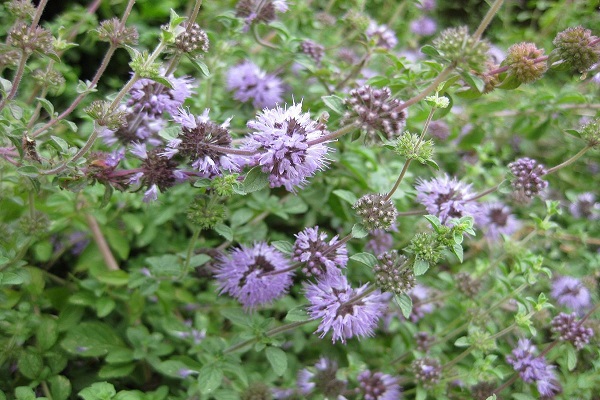
Moroccan mint
This type of mint is appreciated by culinary experts, one has only to remember the refreshing Moroccan tea. The delicate aroma and bitter shade of the leaves help quench thirst. Popular seasoning with mint for sauces and desserts. Mint drinks relieve pain and various inflammations, increase immunity, normalize blood pressure, and improve digestive processes.

Chocolate mint
The culture grows in the form of a low-growing bush with shoots dotted with round, serrated leaves. With sufficient light, the leaves take on a rich purple color. Off-white panicles bloom in early August. Prefers moist, light soils, growing in a short time. It is resistant to cold weather, diseases and pests.
Chocolate mint is named for its flavor and sweetness. It is in demand as an ornamental plant, spice and medicine.
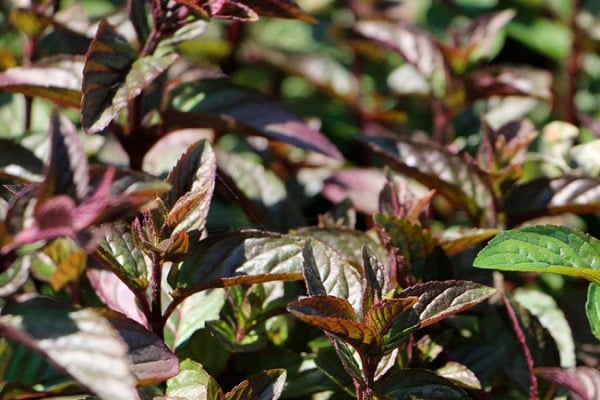
Garden mint
This fragrant variety is grown everywhere. A vigorous plant up to 90 cm tall and bred commercially for the perfumery, medical and culinary industries. The presence of carvone softens the taste and aroma of garden mint, which is appreciated in the production of alcoholic and non-alcoholic beverages, chewing gum, and toothpaste.
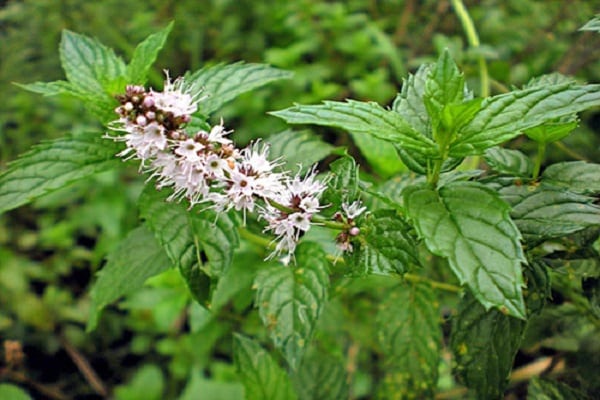
Ombalo: flea mint
The creeping plant rarely grows above 30 cm. It has densely pubescent foliage and false whorls of flowers. Cultivated for garden decoration, as a honey plant and insect repeller. The latter quality is due to the large amount of puguegon and limonene.
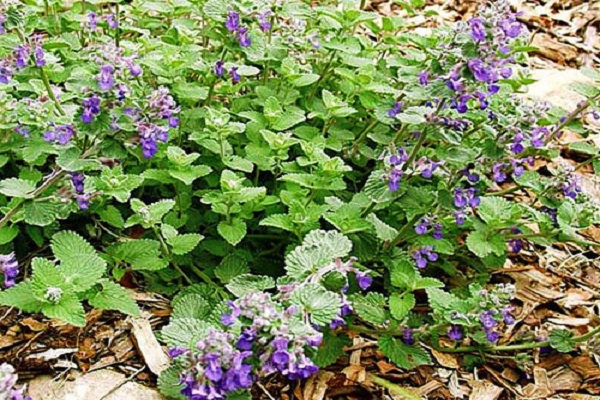
Horse mint
The plant is also known as marsh shandra. It grows in bushes composed of erect pubescent stems 60 cm tall. Oval leaves, moderately pubescent below, are attached to the shoots. Horsemint blooms with white-pink or dark purple panicles throughout the summer. An unpretentious, light-loving culture grows wild in meadows, dumps, wastelands, in ravines.
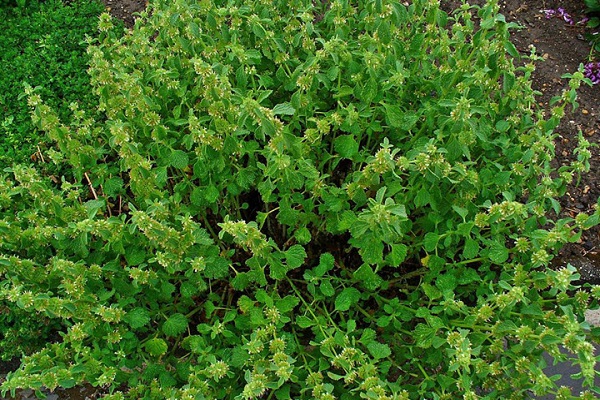
Peppermint
The most common and sought-after variety, named due to its pungent taste. Perennial culture reaches 30-1000 cm. Stems are branched, straight, hollow with oblong ovate leaves with sharp-edged edges, ending in pink or pale purple whorls. Peppermint enters the flowering phase at the end of June and continues to bloom until autumn. Fruits are rare. This species is valued as a honey plant, used in medicine, pharmacology and cooking. Not found in the wild.
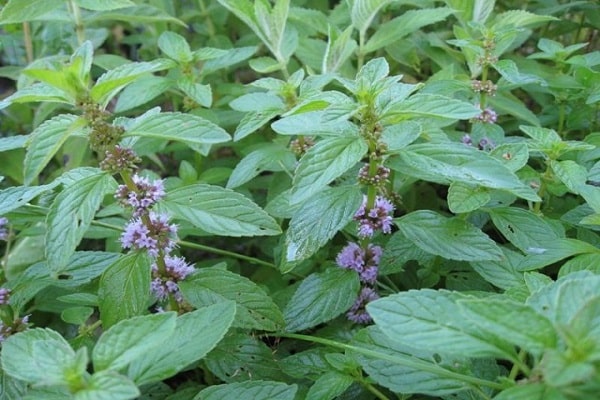
Curly mint
This plant is also called mint, spike-shaped, spring, German. Perennial herbaceous culture grows up to 80-90 cm. Bare erect shoots with oblong, wrinkled, curly leaves with opposite arrangement are crowned with mauve inflorescences.
Flowering continues in summer. The seeds ripen in October.
In terms of distribution and use, this species is similar to peppermint. The bright aroma and unique taste are due to the presence of carvone and linalool. There is no refreshing aftertaste due to the small amount of menthol.In addition to the medical and culinary fields, applications are developed in the confectionery, tobacco industry and soap making.
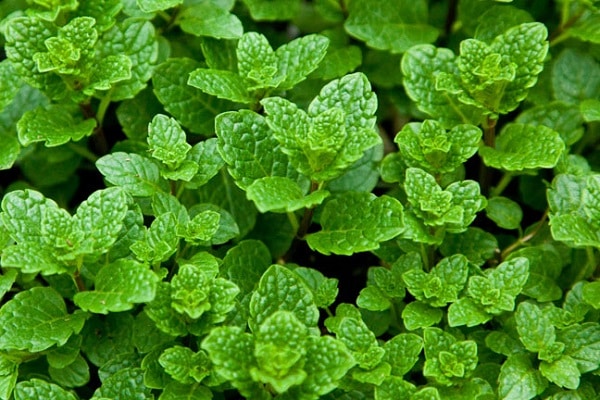
Long-leaved
Frost-hardy mint does well in damp, sun-exposed places. Strong tetrahedral stems with weak pubescence are collected in bushes 75 cm high. The leaves are lanceolate, pubescent, with a grayish tint and a jagged edge. The racemose whorled inflorescences of a pale lilac or lilac color bloom in July-August. Begins fruiting in late summer - early autumn. If the plant is grown as a spicy-aromatic plant, the harvest is done before entering the flowering phase.
Feature of the long-leaved species: inclusion in the production of green cheese. This mint is rich in ascorbic acid. The essential oil includes menthol, pulegon and carvacrol.
